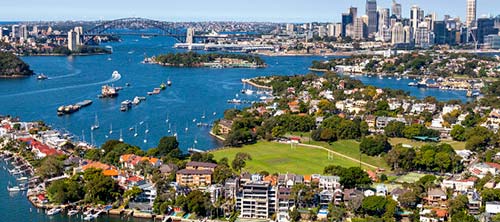As the owner of investment property on the Balmain Peninsula, you might be thinking of ways to maximise your profit, especially if your property is vacant.
Whether your end objective is to ultimately fetch a higher sale price or a better rental rate, there’s no better time than now to catch up on repairs and get those done before the end of the financial year. You also need to think of what property tax deductions (e.g., renovation tax claims and maintenance tax claims) you can claim and when.
This all depends on the stage you’re at as an investor. Do you need the money now or can you wait until you sell or rent out your property?
ATO rules on investment property expenses
According to the Australian Taxation Office (ATO), a rental owner can immediately claim the costs of any type of work done to an investment property – but only for expenses that ultimately contribute to property maintenance and repairs.
Maintenance and repairs
Any work that’s done to prevent the property (or a part of it) from deteriorating or becoming broken or unusable is referred to as maintenance. Examples of this include painting a faded wall and oiling a deck.
Corrections or replacements to fix damages, defects or the effects of wear and tear from renting out a property fall under the heading of ‘repairs’. If you replace a leaking tap or broken light bulb, you can claim it under repairs and maintenance on the rental schedule.
You need to provide proof regarding which items specifically fall under repairs and maintenance. Builders, painters and other tradies can issue an invoice itemising specific jobs you want to claim for, upon request. This way, expenses related to improvements coinciding with repair and maintenance costs can be readily identified separately.
Depreciation deductions
The ATO allows investment property owners to claim depreciation deductions covering the natural wear and tear of a building and its assets over time. This type of deduction can be claimed via capital works deductions and for the plant and equipment assets in the property.
Capital works
Capital works involve changes in the building structure and surrounding property. Examples include fence replacement or adding a property extension. To be eligible, your property has to have been erected after 17 July 1985.
A quantity surveyor can prepare an itemised depreciation schedule used in Australia to show the undeducted value of removed structural assets during a renovation.
Plant and equipment
Plant and equipment deductions can be claimed only for a new property. These include movable, non-permanent elements of a property such as carpets, blinds and light fittings.
However, note that if you purchased a second-hand property after 7:30 p.m. on 9 May 2017, you cannot claim deductions for the decline in value of previously used plant and equipment. If you live in your rental property while renovating, any newly installed assets will be classed as previously used, so you could be risking your tax deductions and benefits.
To be on the safe side, it’s best to seek the advice of your real estate agent or tax accountant to know exactly which costs you can claim for right away and which you can claim later.
Looking for help selling your home or renting your investment property? Our team at Belle Property Balmain support homeowners across Balmain, Balmain East, Birchgrove, Rozelle and Lilyfield. Feel free to get in touch for a no-obligation discussion or property appraisal.




